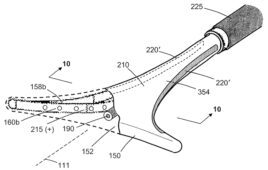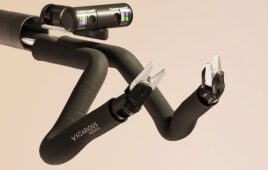Complexity and ownership issues make combination products a patenting labyrinth. Here are five key points to help you navigate the maze.
David J. Dykeman and Roman Fayerberg, Greenberg Traurig
The rise of personalized medicine has spurred another trend: the growth of combination products that blend biologics, drugs and medical devices to improve patient treatment. However, because of the complexity of these combination products, securing a strategic patent can prove challenging. That’s why developers of combination products should aim to develop a “picket fence” around the core technology, filing patents for each individual aspect of the invention and covering incremental improvements. Here are five key considerations for makers of these products:
1. The growth of combination products presents new opportunities and challenges.
Combination products are moving healthcare toward providing patients with targeted treatments by incorporating technologies from various fields including biotechnology, medical devices, gene therapy, nanotechnology and drug-delivery systems. These combined technologies provide patients with more targeted and specialized treatments that can improve the efficacy, safety and delivery of medicines while minimizing side effects.
The global combination products market is on a rapid growth trajectory. Since 2013, combination product sales have grown about 8% annually, and global sales are projected to reach $115 billion by the end of 2019. A key driver for this growth is the increase in the patient population for chronic diseases. The prevalence of cardiovascular disease, diabetes and respiratory diseases is expected to bolster the demand for efficient drug delivery devices, which in turn would augment the growth prospects for the combination products market.
As new device and biologic combinations are created, opportunities and benefits exist for companies willing to develop complex combination products. These products, however, face several unique hurdles in entering the marketplace, namely patenting, regulatory approval and reimbursements. An integrated patent and regulatory strategy that emphasizes the benefits of converging technologies is necessary to succeed in the exploding combination products market.
2. A strong patent portfolio can help ensure commercial success.
A strategic patent portfolio is crucial to the growth and survival of a company developing combination products. Patents provide numerous business advantages, including securing venture capital funding and gaining leverage for collaborations with other companies.
A solid patent portfolio is especially important for combination products where the path to market is typically long and expensive. Without strong patent protection, there may not be adequate incentive to bring the innovation to market at all.
In addition, combination product innovators that address intellectual property (IP), regulatory pathways and reimbursement starting at the early stages of company formation are better positioned for acquisition. Merger and acquisition deals close at all stages, but acquirers are willing to pay a premium for a company that is further down the approval path and has been de-risked.
3. Innovators should patent the device, the biologic and the device/biologic combination.
Before product development begins, conduct a freedom-to-operate (FTO) search on every aspect of the device and biologic to determine whether the company is free of third-party patents and can practice its invention. The FTO search should include third-party patents, trademarks and copyrights, as well as the obtaining of IP assignments of ownership and legal opinions of non-infringement or invalidity. Once the FTO search is completed, the combination product can be designed to avoid infringing any third-party patents found and patent applications can be filed covering white space in the patent landscape. Conducting an FTO search early in the development process can help determine whether and how a company can market its combination product.
Developing a strong portfolio first requires comprehensive patent coverage of the device, the biologic and the device/biologic combination. Comprehensive coverage should include patent claims directed to compounds, diagnostics, therapeutics, methods of treatment, use, manufacture and any other novel aspects of the combination product.
When developing a patent portfolio, the combination product innovator should consider the following questions to adequately protect the core technology:
- Is the value of the invention in the field fully understood?
- Are the inventions protected by narrow claims?
- Do the inventions cover all claims that could prevent any competitors from getting around the product?
Development of the portfolio should include patenting incremental improvements to the technology to form a “picket fence” of protection around the core technology. With a picket-fence approach, the company patents all of the incremental innovations surrounding the main invention. This ancillary protection forms a protective barrier around the core technology and prevents competitors from patenting technology that competes with the protected asset.
When bringing a combination product to market, product makers must carefully navigate regulatory pathways. First, the company’s regulatory strategy should be considered in conjunction with its ability to obtain and leverage a robust patent portfolio. Be wary of disclosing the combination product or its therapeutic benefits before filing the patent application with the patent office. Companies developing combination products should coordinate and monitor the communication among scientists, engineers and attorneys tasked with preparing FDA and patent applications.
4. In joint ventures, establish ownership rights from the outset.
For companies entering into joint ventures, issues surrounding ownership of the combination product may emerge. For example, one company may claim ownership of the device, and a second company may claim ownership of the drug or biologic, thereby clouding ownership of the combination product. Therefore, companies entering into agreements with other companies to develop or produce combination products should establish at the outset of the relationship what rights each party will have related to the combination product and what rights each party will retain upon termination of the collaboration. Ownership disputes can be resolved by assigning patent rights entirely to one party or jointly between the parties. Alternatively, ownership disputes may be resolved by exclusive or non-exclusive licensing of the patent rights.
5. Combination products require specialized patent counsel.
Due to the hybrid nature of combination products, companies need to find savvy patent counsel to handle both the device and biologics components of the product. Because patent attorneys often specialize in either biologics, pharmaceuticals or medical devices, multiple patent attorneys may be needed to handle combination products. Ideally, these patent attorneys should work together in the same firm to fully and effectively prosecute patents directed toward each aspect of the product. Finding sophisticated patent counsel for combination products may be challenging, but is crucial for maximizing the quality of the patent portfolio and its scope of coverage.
A new paradigm
Combination products are the next wave in healthcare. Not only do they present new business opportunities, but they can improve diagnostics and therapeutics to predict, regulate and monitor pathological responses. They allow pharmaceutical companies to move beyond traditional medicine to a new paradigm for developing a catheter, stent or pill that could forever change how health issues are approached. For medical device companies at the forefront of combination product development, a careful patent and regulatory strategy can address hurdles unique to these products and ensure success in this growing market.
David J. Dykeman is co-chair of Greenberg Traurig’s Global Life Sciences & Medical Technology Group and co-chair of the firm’s Boston Intellectual Property & Technology Group. A registered patent attorney with over 20 years of experience in patents, intellectual property, and licensing, Dykeman’s practice focuses on securing strategic worldwide intellectual property protection and related business strategy for high-tech clients, with particular expertise in medical devices, combination products, healthcare IT, and life sciences.
Roman Fayerberg is a patent attorney and shareholder in the Boston office of Greenberg Traurig. His patent practice builds on seven years of experience he gained as a research and development engineer at C.R. Bard and Boston Scientific.
The opinions expressed in this blog post are the author’s only and do not necessarily reflect those of MedicalDesignandOutsourcing.com or its employees.





